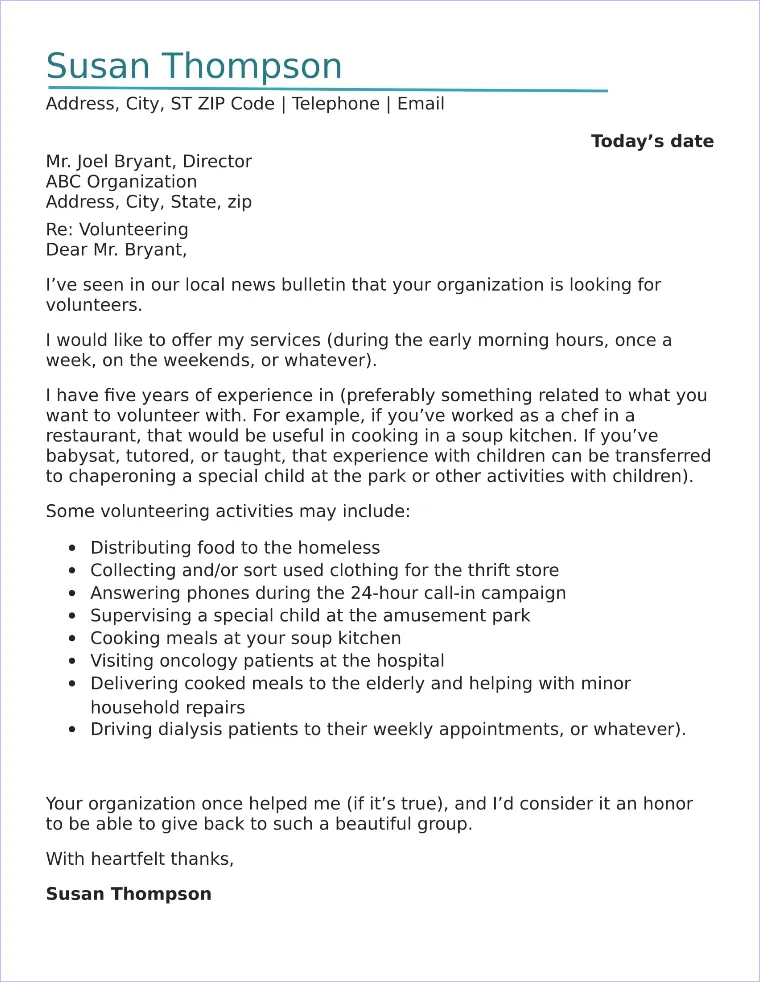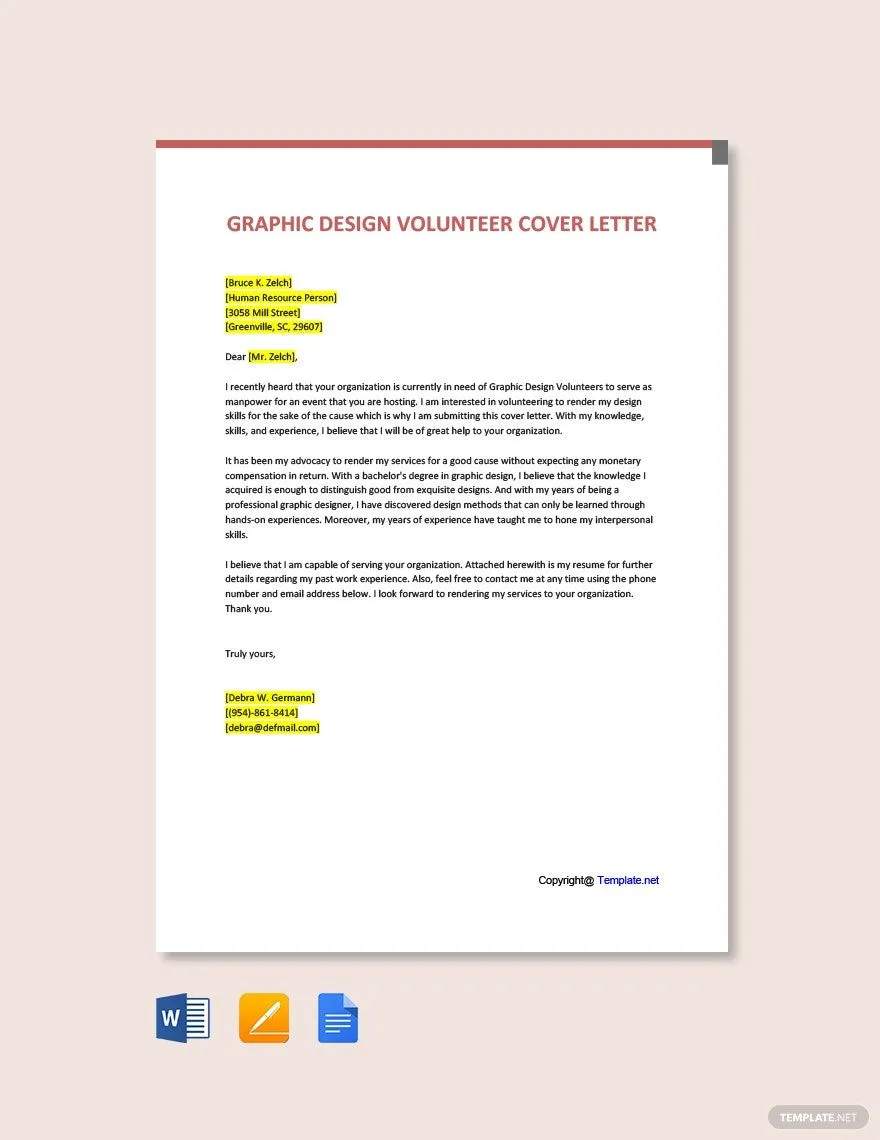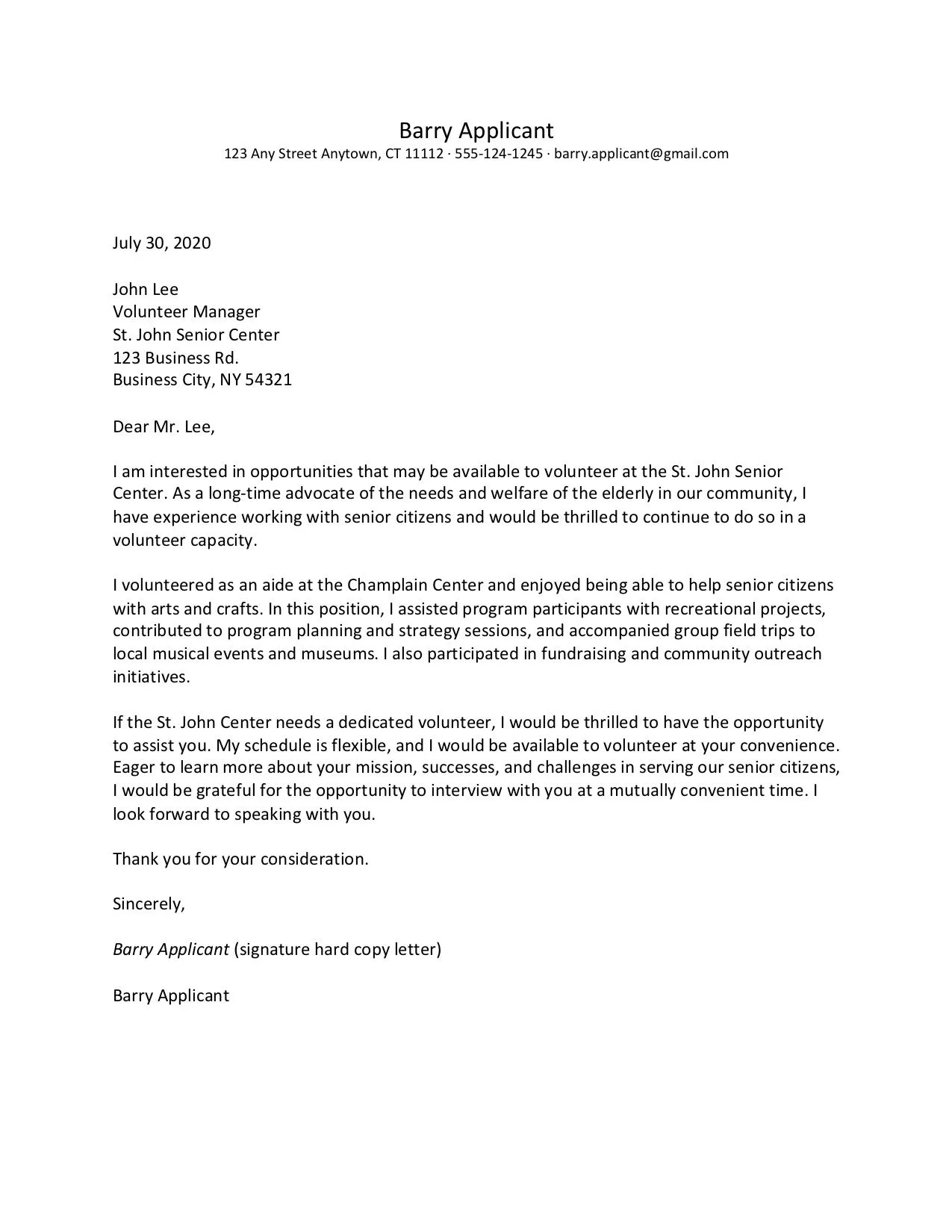Why a Stellar Volunteer Cover Letter Matters
A volunteer cover letter is more than just a formality; it’s your introduction and a crucial opportunity to make a positive first impression. Unlike a resume, which provides a factual overview of your experience, a cover letter allows you to express your personality, enthusiasm, and genuine interest in the organization. It’s your chance to connect with the reader on a more personal level and demonstrate why you’re the ideal candidate. A well-crafted cover letter can set you apart from other applicants, showcase your understanding of the organization’s mission, and highlight your specific skills and experiences relevant to the volunteer role. Think of it as your personal sales pitch, designed to persuade the reader that you’re the perfect fit for their volunteer program and worthy of an interview or further consideration. It’s your first step toward making a difference and contributing to a cause you believe in.
Key Elements of a Compelling Cover Letter
To create an amazing volunteer cover letter, you need to focus on several key elements. Begin with a professional header, including your contact information and the date. Address the letter to a specific person, if possible; this shows you’ve done your research and are genuinely interested. In the opening paragraph, state the specific volunteer position you’re applying for and how you learned about it. Clearly express your enthusiasm for the organization and its mission. The body paragraphs should highlight your relevant skills, experiences, and accomplishments. Provide specific examples that demonstrate how you’ve made a difference in the past. Explain why you’re passionate about volunteering and what you hope to gain from the experience. In the closing paragraph, reiterate your interest, thank the reader for their time, and include a call to action, such as expressing your availability for an interview. Finally, ensure your letter is well-written, concise, and free of errors.
Highlighting Your Skills and Experience

Your volunteer cover letter is the perfect platform to showcase your skills and experiences. However, it’s crucial to focus on the skills that are relevant to the specific volunteer role you’re applying for. Review the job description carefully and identify the key requirements. Then, think about your past experiences, whether they’re from previous volunteer work, jobs, school projects, or personal endeavors. Consider what skills you’ve developed that align with the organization’s needs. Did you lead a team, manage projects, communicate with diverse groups, or provide excellent customer service? Provide concrete examples to illustrate your skills. Instead of just stating that you’re a good communicator, describe a situation where you successfully communicated with a difficult client or mediated a conflict. Use action verbs to describe your accomplishments, such as “managed,” “coordinated,” “implemented,” or “created.” Tailoring your skills section to the specific requirements of the volunteer role will significantly increase your chances of getting noticed.
Tailoring Your Letter to the Organization
Generic cover letters are easily identified and often discarded. To make your letter amazing, it must be tailored to the specific organization you’re applying to. This demonstrates your genuine interest and understanding of their mission and values. Before you start writing, thoroughly research the organization. Visit their website, read their mission statement, and learn about their programs and activities. Understand their goals and the challenges they face. In your cover letter, explain why you’re drawn to their cause and how your skills and experiences align with their needs. Mention specific projects or initiatives that resonate with you and explain how you can contribute to their success. Personalize your letter by addressing it to the hiring manager or volunteer coordinator by name. Showing you’ve taken the time to learn about the organization and connect your experiences to their specific needs will make your application stand out and increase your chances of landing the volunteer role.
Formatting Your Volunteer Cover Letter
The format of your volunteer cover letter is just as important as its content. A well-formatted letter is easy to read and presents you in a professional light. Use a standard business letter format with a clear and readable font, such as Times New Roman, Arial, or Calibri, and keep the font size between 10 and 12 points. Maintain consistent spacing throughout the letter, typically single-spaced with a blank line between paragraphs. Start with your contact information in the top left corner, followed by the date and the recipient’s contact information. Use clear headings and subheadings to organize your information logically. Ensure your letter is concise and easy to scan. Aim for no more than one page, as volunteer coordinators are often busy and may not have time to read lengthy letters. Proofread your letter carefully to eliminate any grammatical errors or typos, as these can create a negative impression. Proper formatting shows that you are organized, detail-oriented, and respectful of the reader’s time.
Proofreading and Polishing Your Letter

Proofreading and polishing your volunteer cover letter is essential for making it amazing. Even the most compelling content can be undermined by errors in grammar, spelling, and punctuation. After you’ve finished writing, take a break and then reread your letter with a fresh perspective. Check for any typos, grammatical errors, and awkward phrasing. Use a spell checker and grammar checker to help identify mistakes, but don’t rely on them entirely. Read your letter aloud to catch any errors that you might miss when reading silently. Ask a friend, family member, or career counselor to review your letter and provide feedback. They may spot errors or suggest improvements that you missed. Ensure that your letter is well-organized, with a clear flow of ideas. Check that your tone is appropriate for the organization and the volunteer role. Polishing your letter demonstrates attention to detail, professionalism, and a commitment to excellence, all of which are valuable qualities in a volunteer.
Common Mistakes to Avoid in a Volunteer Cover Letter
Several common mistakes can hurt your chances of landing a volunteer role. Avoid generic or cookie-cutter cover letters that aren’t tailored to the specific organization or role. Don’t ramble or include irrelevant information. Keep your letter concise and focus on your most relevant skills and experiences. Never use slang, jargon, or overly casual language, as this can make you appear unprofessional. Avoid negative language or complaining about previous experiences. Instead, focus on your positive attributes and what you can contribute. Don’t oversell yourself or make exaggerated claims. Be honest and authentic in your presentation. Avoid any spelling or grammatical errors, as these can create a negative impression. Finally, don’t forget to proofread your letter carefully before submitting it. By avoiding these common mistakes, you can significantly improve your chances of making a positive impression and securing the volunteer role.
Best Practices for Sending Your Letter
Once you’ve crafted your amazing volunteer cover letter, it’s time to send it. Ensure your cover letter is formatted as a professional document, such as a PDF, to preserve its formatting and prevent any display issues. Review the application instructions carefully to determine the preferred method of submission. If you’re sending your letter via email, use a clear and concise subject line that includes your name and the volunteer position you’re applying for. Attach your cover letter and resume to the email. Personalize the email body by briefly reiterating your interest in the volunteer role and mentioning the attached documents. Proofread your email before sending it. Follow up with the organization a week or two after submitting your application. This shows your continued interest and allows you to inquire about the status of your application. Keep your follow-up email brief and polite, and thank the recipient for their time and consideration. These best practices will help ensure that your volunteer cover letter makes a positive impression and increases your chances of getting selected.
